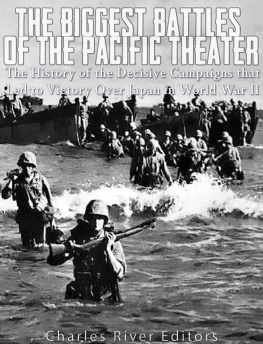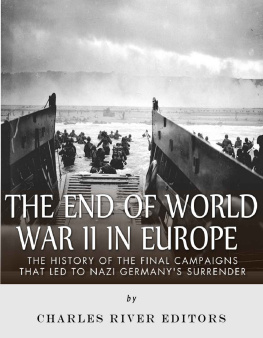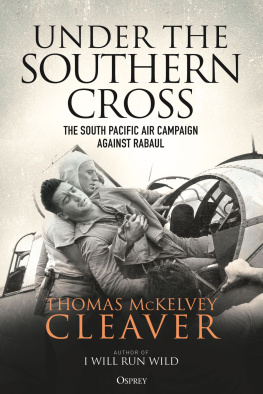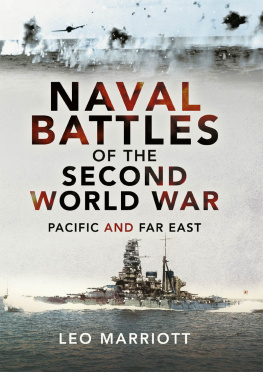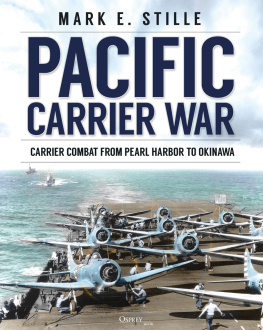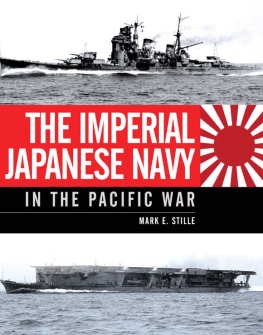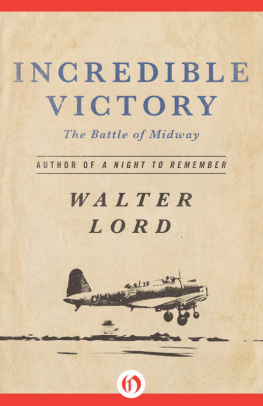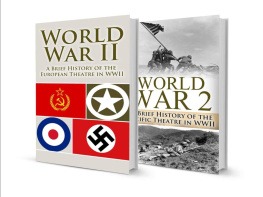Charles River Editors - The Biggest Battles of the Pacific Theater: The History of the Decisive Campaigns that Led to Victory Over Japan in World War II
Here you can read online Charles River Editors - The Biggest Battles of the Pacific Theater: The History of the Decisive Campaigns that Led to Victory Over Japan in World War II full text of the book (entire story) in english for free. Download pdf and epub, get meaning, cover and reviews about this ebook. year: 2016, publisher: Charles River Editors, genre: History. Description of the work, (preface) as well as reviews are available. Best literature library LitArk.com created for fans of good reading and offers a wide selection of genres:
Romance novel
Science fiction
Adventure
Detective
Science
History
Home and family
Prose
Art
Politics
Computer
Non-fiction
Religion
Business
Children
Humor
Choose a favorite category and find really read worthwhile books. Enjoy immersion in the world of imagination, feel the emotions of the characters or learn something new for yourself, make an fascinating discovery.
- Book:The Biggest Battles of the Pacific Theater: The History of the Decisive Campaigns that Led to Victory Over Japan in World War II
- Author:
- Publisher:Charles River Editors
- Genre:
- Year:2016
- Rating:3 / 5
- Favourites:Add to favourites
- Your mark:
The Biggest Battles of the Pacific Theater: The History of the Decisive Campaigns that Led to Victory Over Japan in World War II: summary, description and annotation
We offer to read an annotation, description, summary or preface (depends on what the author of the book "The Biggest Battles of the Pacific Theater: The History of the Decisive Campaigns that Led to Victory Over Japan in World War II" wrote himself). If you haven't found the necessary information about the book — write in the comments, we will try to find it.
*Includes accounts of the campaigns
*Includes a bibliography for further reading
The waters of the Pacific Ocean stretching deep blue under the tropical sun, or scourged by typhoons provided World War IIs most far-flung battlefield. Two of the worlds premier mid 20th century maritime powers, the United States of American and the Empire of Japan, grappled for supremacy across that vast expanse.
Although not as well-remembered as D-Day or even the attack at Pearl Harbor that preceded it, the Battle of Midway was one of the most unique and important battles fought during World War II. In fact, the turning point in the Pacific theater took place between June 4-7, 1942 as a Japanese fleet moved a sizable fleet intending to occupy Midway Island and draw the American navy near. Instead, American aircraft flying from three aircraft carriers that had been away from Pearl Harbor in December 1941 got a bearing on the Japanese fleet and sunk four Japanese aircraft carriers, permanently crippling Japans navy. The Battle of Midway was one of the first major naval battles in history where the enemy fleets never actually saw or came into contact with each other.
The Guadalcanal Campaign, which ran from August 1942 to February 1943, was a bitter and protracted struggle that also happened to be a strange and transitional confrontation quite unlike any other in the long Pacific War. In conjunction with the American victory at the Battle of Midway, Guadalcanal represented the crucial moment when the balance of power in the Pacific tipped in favor of the Allies, but the idea that Guadalcanal would be such a significant battle would have come as a surprise to military strategists and planners on both sides.
By the spring of 1943, American military planners had begun to create a plan to dislodge Japan from east and southeast Asia. When Admiral Chester Nimitz was directed to capture an island in the Bonin group, Iwo Jima stood out for its importance in making progress against the mainland, with three airfields that would allow American air forces to attack the Japanese mainland. But the Japanese were also well aware of how important Iwo Jima was, and they fought desperately in bunkers and tunnels that required the Americans to carefully clear them out gradually. Less than 5% of the Japanese soldiers on Iwo Jima were taken alive, and American casualties were estimated at 26,000, with 6,800 killed or captured. A month later at Okinawa, which lasted from April-June, the Americans suffered an estimated 62,000 casualties, with 12,000 Americans killed or captured. These deadly campaigns came after widely-held predictions that taking these islands would amount to no more than a brief footnote in the overall theater.
Given the horrific nature of the combat put up by the Japanese, its no surprise that the final campaigns had a profound psychological effect on the men who fought, but it also greatly influenced the thinking of military leaders who were planning subsequent campaigns, including a potential invasion of the Japanese mainland. The casualty tolls ultimately helped compel President Truman to use the atomic bombs on Hiroshima and Nagasaki in an effort to end the war before having to attempt such an invasion.
The Biggest Battles of the Pacific Theater: The History of the Decisive Campaigns that Led to Victory Over Japan in World War II analyzes the fighting between the Americans and Japanese across the Pacific. Along with pictures of important people, places, and events, you will learn about the biggest battles of the Pacific like never before.
Charles River Editors: author's other books
Who wrote The Biggest Battles of the Pacific Theater: The History of the Decisive Campaigns that Led to Victory Over Japan in World War II? Find out the surname, the name of the author of the book and a list of all author's works by series.

